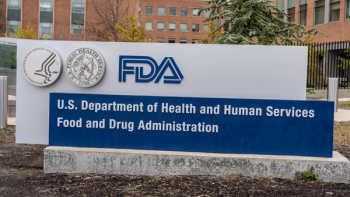
Key Regulatory Deadlines Loom for Drug Dispensers and Wholesalers
The COVID-19 pandemic is currently top of mind among pharma professionals, but stakeholders have other business to attend to – such as the upcoming deadline to meet regulatory requirements of the US FDA’s 2013 Drug Supply Chain Security Act.
Fast-breaking pandemic news and supply chain challenges are top of mind among healthcare professionals these days, but pharmaceutical industry stakeholders have other business to attend to as well – including addressing the upcoming deadline to meet regulatory requirements of the US FDA’s 2013 Drug Supply Chain Security Act (DSCSA).1 Specifically, wholesaler/distributors and dispensers will become accountable this fall.
As of November 27, 2020, pharmaceutical dispensers will no longer be allowed to receive drugs into inventory that are not serialized with a 2-dimensional (2D) barcode (e.g., GS1 DataMatrix) according to the DSCSA. On the same date, an FDA enforcement delay for wholesalers’ and distributors’ verification of saleable returns will expire. Each implementation deadline marks a key milestone for electronic data exchange created to make the drug supply chain safer and more secure.
Serialization requirements involve the entire supply chain. The DSCSA requires pharmaceutical products to be serialized and labeled to support an interoperable, electronic system for identifying and tracing throughout their distribution in the United States. Four standardized data elements are required to be encoded in a barcode, including a National Drug Code (embedded in the Global Trade Item Number®, GTIN®), serial number, lot number and expiration date. Packages (“lowest saleable units”) must be marked with a 2D barcode, and homogeneous cases must include a 2D or linear barcode (e.g., GS1-128 barcode). The application of standardized data facilitates product traceability throughout the healthcare supply chain and will be used to associate the physical product markings with serialized electronic data exchange that will be required in 2023.
As the industry continues its preparations for DSCSA2 serialization, trading partners are increasingly focusing on the journey to DSCSA item-level traceability, and have already made significant investments in serializing product lines and implementing serialized item traceability systems.
Dispensers’ responsibilities are coming due. Dispensers are the last trading partners required to adhere to the milestone requirements of DSCSA. Now that drug manufacturers are serializing and labeling products with 2D barcodes, and returned products’ eligibility for sale will be verified by wholesaler/distributors, drug dispensers are closing in on a deadline of their own. Beginning November 27, 2020, DSCSA prohibits dispensers (primarily retail and hospital pharmacies) from accepting drugs into inventory that are not properly serialized with a 2D barcode.
To address this mandate, dispensers will need 2D barcode scanners and they must be tied into supply-chain data systems where product information details are contained and exchanged between trading partners. Preparing to meet the latest phase of requirements may be a heavy lift for some pharmacies, particularly smaller, independent retail shops; for most, there is important work ahead. End-to-end DSCSA implementation will result in improved inventory visibility and better detection of product counterfeits. Ultimately it helps protect patients’ “five rights” of medication use: assuring that the right patient can receive the right drug, at the right time, in the right dose, and via the right route-all of which are generally regarded as a standard for safe medication practices.
Pharmacies without a DSCSA plan in place can get started building one right away. Resources are available to provide guidance, including a GS1 US Implementation Guideline, “Applying GS1 Standards for DSCSA and Traceability.”3
Wholesaler/distributors are running out of time to implement specified requirements for verification of saleable returns before the FDA’s one-year enforcement delay expires on November 27, 2020. At that point, they will be accountable for verifying the unique identifier of returned products before they can be placed into inventory for resale.
Verification consists of determining whether the product identifier on a package or case-specifically, the National Drug Code (NDC), serial number, batch/lot number, and expiry date-corresponds to the product identifier assigned by the manufacturer or the repackager. To meet this requirement of the Act, the US pharmaceutical industry has adopted the GS1 GTIN with an embedded NDC as the unique identifier for each pharmaceutical product. When a manufacturer receives a verification request from a wholesaler, the “requestor” expects sub-second response time, confirming the data that’s encoded in the barcode matches what manufacturers have on file.
This provision enables supply chain partners to verify that a product in their possession is suitable for forward distribution. Manufacturer verification of the product identifier and associated data will give supply chain stakeholders actionable information helping them to determine whether to accept, reject or quarantine a product.
Drug manufacturers are already required to serialize and mark their products with the specified data format and bynow, the majority of applicable products are labeled accordingly. A barcode assessment conducted last summer by GS1 US, in collaboration with AmerisourceBergen Corporation, McKesson Pharmaceutical and Cardinal Health, found more than 74% of products scanned at the time met the requirements. This was a threefold increase from an assessment done one year earlier, and reflects manufacturers’ progress in implementing the required package and homogeneous case label changes. Presumably, that progress has continued into 2020.
Products that were placed into commerce before November 27, 2018 are grandfathered, exempting them from serialization enforcement under DSCSA. This has allowed the industry to prevent drug shortages and ensure that patients could obtain proper medications when needed. The average expiration date of products found in inventory during the 2019 assessment was 1.6 years. As those products are consumed or expire, the percentage of fully serialized products in the supply chain will continue to go up, heading towards the goal of 100 percent.
Traceability enables patient safety improvements. The GTIN component of a drug’s barcode simplifies product identification with a single identifier used across all supply chain partners. It enables providers to access and utilize manufacturer-defined product information to promote accuracy, and helps support correct contract pricing and streamline rebate processing. Automated data exchange enabled by barcode scanning also reduces mistakes and time spent resolving order and invoice errors, and it provides the foundation for traceability to improve product recall processes.
In a few years, the entire DSCSA information system will come together, when every trading partner in the supply chain has fulfilled its role and an electronic, interoperable system for product traceability is implemented. At that point, transaction information for each sale of prescription drugs will be exchanged electronically to verify product identifiers at each point in the supply chain-from supplier to dispenser and everywhere in between. The resulting consistency in system-wide, standardized information sharing will enable cost savings, transactional accuracy improvements and more efficient recalls when needed, ultimately making the drug supply safer for patients.
Peter Sturtevant is Senior Director, Community Engagement at
Notes
1.
Newsletter
Lead with insight with the Pharmaceutical Executive newsletter, featuring strategic analysis, leadership trends, and market intelligence for biopharma decision-makers.




